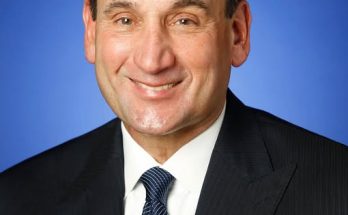Alabama has once again captured the nation’s attention with what can only be described as a “Crimson Coup” recruiting offensive, unleashing a blitzkrieg across the Big Ten footprint that has programs reeling. The recent wave of flips and commitments has transformed what was already a premier class into something virtually untouchable—a recruiting juggernaut that reads like an invasion from Tuscaloosa into traditional Big Ten strongholds. The narrative of Alabama as a Southern SEC power is expanding, reasserting its dominance far beyond the Mason-Dixon line.
At the heart of this coup is the commitment of **Dijon Lee**, a 6‑foot‑4, 190‑pound lock-down cornerback from Mission Viejo, California. A bona fide five-star who ranked among the top 20 prospects nationally, Lee chose Alabama in June 2024 despite heavy interest from USC, Washington, Texas, and Georgia. He arrived amidst swirling questions about Alabama’s identity post-Saban, yet his enrollment and early spring evaluations signal a player ready to anchor a reinvigorated secondary.
Lee is more than just a defensive piece—he’s a statement. Standing tall, streamlining routes with ease, he embodies the physicality and range elite NFL prospects need. His high school career is littered with eye-popping stats: 139 tackles, eight interceptions, and 18 pass deflections in his final seasons Alabama saw that type of high-ceiling talent and effectively said, “We’re back in the national conversation.” Lee’s commitment reverberated through recruiting rankings, elevating Alabama into the top tier of national 2025 classes .
But Alabama didn’t stop there. The Tide crashed the offensive line circle, flipping key targets away from Big Ten programs. **Michael Carroll**, a five-star interior offensive lineman from IMG Academy, famously chose Alabama over Georgia, Penn State, and Michigan . Standing 6‑6 and 315 pounds, Carroll brings a brutal mix of strength and quickness—a plug-and-play blocker destined for early snaps. His addition reinforces what already was shaping up to be a dominant front five.
As if that wasn’t enough, sharp observers noted Alabama’s pursuit of **Ty Haywood**, another five-star tackle originally committed to Alabama but later swayed by Michigan’s NIL push. Haywood eventually enrolled with the Wolverines on February 5, 2025. While Haywood didn’t ultimately land in Tuscaloosa, Alabama’s aggressive chase sent ripples through Big Ten programs. It was a bold gambit — and though it didn’t land, it underscored that Alabama is now playing pay-to-play at the top of the NIL arms race. That they nearly outflanked Michigan speaks volumes about their new recruiting philosophy.
Yet the offense wasn’t content to run on just linemen. The Tide executed a key flip of **Ivan Taylor**, a four-star safety who pivoted from Michigan to Alabama. Taylor’s decision was crucial timeline-wise — a signature flip from the Big Ten trenches further emboldened Alabama’s narrative of territorial conquest. It watched defensive staffers across the conference shift uneasily as Taylor bolstered Alabama’s secondary depth.
Meanwhile, in the trenches again, **Micah DeBose**, a four-star tackle averaging 315 pounds and 6‑5 in frame, actively dominated practice stages such as the Under Armour All‑America Game. His adaptability to play guard or tackle signals Alabama’s flexibility-centric line-building model: one that can plug and pivot based on need. DeBose’s measured growth under new line coach Chris Kapilovic promises immediate returns.
Let’s not overlook the acquisition of **Antonio Coleman**, a four-star defensive lineman formerly favored by Auburn . In perhaps the most symbolic flip of all, Alabama pried Coleman from its fiercest rival’s grasp, striking a psychological blow greater than his ranking would suggest. His decision, emerging in March 2024, was a declaration: Alabama under Kalen DeBoer isn’t just inheriting talent—it’s actively stealing it from traditional rivals, South and North.
These flips, taken cumulatively, have transformed Alabama’s class into a fortress of power and prestige—a hybrid recruiting blueprint combining homegrown SEC staples and newly targeted Big Ten and West Coast stars. Recruiting insiders are pegging Alabama’s 2025 class firmly in the top-two echelon, challenging Texas, Georgia, and occasionally toppling Ohio State in the rankings ([africa.espn.com][8]).
Recruit directionality also matters: in-state talent still flourishes—five from Alabama, four from California, three from Georgia—but so do out-of-state stars. Quarterback Keelon Russell (Texas), wide receiver Derek Meadows (Nevada; flipped from LSU), and tackle Jackson Lloyd (California) underscore Alabama’s reach. This cocktail of pipelines is no accident: DeBoer’s recruiting staff, featuring Washington and Wisconsin coaches, has built diverse inroads — a national playbook echoing Saban’s architecture but with broader regional targets .
This momentum reached critical mass in early December. Alabama locked in Lee, Carroll, Russell, DeBose, and several others on signing day — despite aggressive recruitment from Michigan, USC, Georgia, and others . They “stuck to the guns” on 20 commitments; the biggest prize? Derek Meadows, a 6‑6 pass-catcher originally slated for LSU, who made the switch on signing day—a flourish of finesse against SEC and Big Ten alike.
In that context, the “Crimson Coup” isn’t mere hyperbole; it’s a strategic doctrine: scout, pursue, flip, and neutralize rival pipelines. It was visible in the groundwork laid in spring visits, happening under the radar. It emerged in focused recruitment of defensive assets like Lee and Taylor. It manifested through offensive linemen acquisitions and high-impact out-of-region players. It proved resilient enough to withstand setbacks—i.e., losing Haywood—but adaptive enough to rebound. And it has Big Ten programs scrambling to defend their backfield and field-of-play allegiances.
Consider the optics: Alabama fringes its traditional SEC bastion while eyeing linebackers, defensive linemen, and corners from Michigan to California. Rivals see Tide scouts at Big Ten title games, trainers forging relationships with parents in Ohio and Texas, Alabama gear being swapped for midfield visits in the Midwest. It echoes not only Nick Saban’s national vision, but also the recruiting aggression of college powerhouses like Oregon and Ohio State—not to mention NIL juggernauts Texas and Georgia. Only this time, Alabama is asserting “We do it sultrier, smarter, scarier.”
Yes, NIL money is fueling this influx, but credit structure maintains primacy. DeBoe’s staff is more active, more relational, more opportunistic: they pounced where Saban might have stayed defensive, and they crafted recruiting pitches tailored to elite-level recruits seeking both development and exposure. They leveraged Alabama’s brand (six championships, NFL pipeline) but added momentum—looking different, sounding different, thinking different than just “Crimson Tide of old.”
The results are compelling: ESPN insiders pointed to six of Alabama’s top-100 commitments coming post‑June ([africa.espn.com][8]). They speak openly: “They’ve hit the ground running… have done a hell of a job”. Simply put, evaluators across recruiting notice Alabama’s adjusted velocity: faster, wider, deeper, more flexible.
But this precision recruiting blitz also reveals pain points. The eventual loss of Haywood to Michigan shows Alabama isn’t entirely insulated from NIL escalations. Losing a five-star Big Ten lineman on Signing Day is still a negative—less recruitment insurance, higher signal to Big Ten elite families that Michigan beats them in battle-zone bidding. Moreover, wide receiver and running back flips (Caleb Cunningham to Ole Miss, Anthony Rogers wavering, etc.) suggest that Alabama still faces stiff competition within the SEC and nationwide .
Nonetheless, Alabama’s mantra seems clear: win the flips, hold the commitments, chase Big Ten’s untapped pipelines—and repeat. Film and evaluation point to a roster transformed: Lee in the secondary, Taylor and Coleman in support, an o-line bookended by DeBose, Carroll, Lloyd—remnants of Saban’s power frontage now revitalized under DeBoe.
The implications are transcendent. Tuscaloosa is rewriting recruiting history in real time. Big Ten coaches are now treating Alabama as a direct competitor on their own home fields. Families of five-star offensive tackles in Iowa and Texas now anticipate Tide visits. Defensive backs in California are reconsidering — Alabama isn’t just a fallback, it’s a focal point. And to the extent fans of SEC rivals fret about USC, Texas, or Georgia raids—imagine that fear multiplied in Ann Arbor, Columbus, Minneapolis, or Lincoln.
This is more than ideology: Alabama rang plays on field during the 2024 season, finishing 9–4 under Kalen DeBoer ([en.wikipedia.org][10]). Now, with newfound recruiting ascendency, their trajectory lines beyond 2025. Look for early enrollee reactions. Spring and summer camps will offer previews. Crystal ball updates will likely reflect more flips. And when fall 2025 arrives, traffic through Bryant‑Denny—on the field and in the stands—will look and sound different.
If there is one takeaway, it’s that Alabama has taken Saban’s national vision and projected it with more speed, more scope, more aggression. They have the narrative, the assets, and the momentum. And as the “Crimson Coup” continues, it places even more emphasis on the rest of college football to respond — or risk being invaded.


